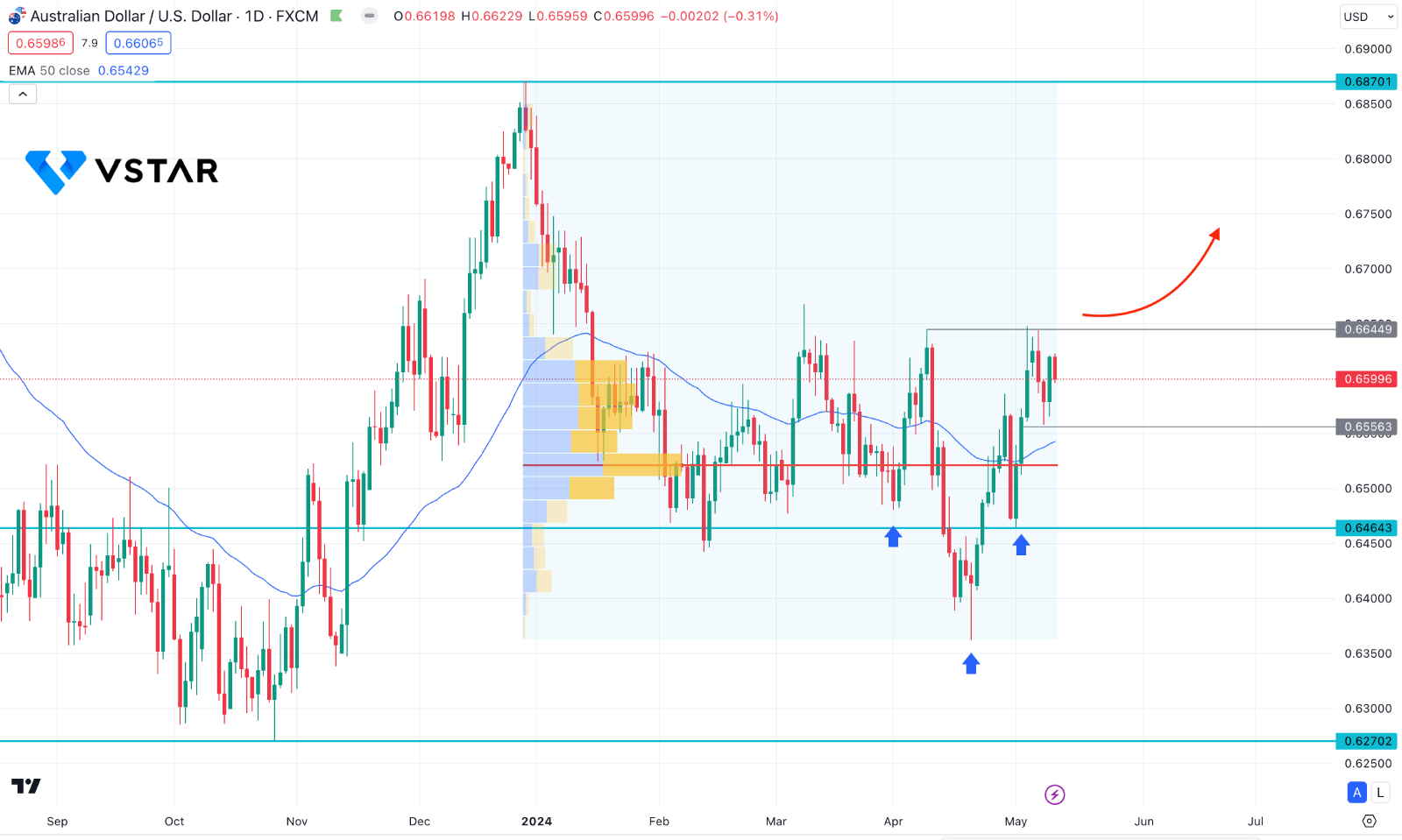After being dissatisfied with the Reserve Bank of Australia's (RBA) choice to adopt a neutral position, Australian traders will now redirect their attention towards the country's employment report and the wage price index this week.
RBA's Position On Rate Decision
Because Q1 inflation was more persistent than expected, anticipations of RBA rate cuts have diminished. Currently, the probability of being designated for a quarter-point increase by September is a respectable 20%.
Although the Bank has maintained its stance of not ruling anything out, a continued wage increase might enhance the probability of a rate hike in September. In juxtaposition to this prospective action, other central banks are considering lowering interest rates. Such a scenario could be favorable for the Australian dollar, especially if investors are encouraged to increase their wagers on Fed rate reduction by Wednesday's US inflation data, thereby increasing their risk appetite.
What To Look At In China
In the context of the Australian dollar's reaction to the broader market sentiment, China will emerge as an additional pivotal factor. April data on fixed asset investment, industrial production, and retail sales from China will be available for analysis this week. Notwithstanding the official PMIs that predicted a deceleration, China's April imports and exports rebounded, suggesting an enhancement in domestic and international demand.
Even though robust GDP growth in the first quarter diminished the need for Chinese policymakers to implement stimulus measures, any indication of a sluggish start to the second quarter in the data released next week could reignite concerns regarding the economic recovery's stability. Consequently, this could potentially strain the Australian and New Zealand currencies, potentially causing the former to retreat a portion of its gains associated with employment.
US CPI In Focus
Transitioning attention to the United States, the Federal Reserve appeared less hawkish than expected at its meeting last week; Chair Powell ruled out rate hikes and alluded to an ongoing inclination towards rate cuts. This sentiment was further supported by policymakers this week, who concurred with the softer-than-anticipated April employment situation report.
Neel Kashkari, president of the Minneapolis Fed, was the only official to voice a dissenting opinion. Kashkari proposed that interest rates might remain unchanged for the year, and he acknowledged that although the hurdle for a rate rise is formidable, it is not insurmountable.
Traders will intently monitor the US CPI figures for April, which are scheduled for release on Wednesday, in light of the factors above. As indicated by the S&P Global PMIs, there was a marginal increase in output prices during April compared to March. This suggests that Wednesday's numbers may be subject to certain downside risks. Furthermore, the decline in the year-on-year change in oil prices increased the potential adverse risks associated with the headline rate.
AUDUSD Forecast Technical Analysis

In the daily chart of AUDUSD, the current price hovers above the high volume line, suggesting a buyer's presence in the market. Moreover, the 50-day EAM is below the current price with a bullish slope.
Still, the AUDUSD is trading within the congestion area, as the recent price hovers within the 0.6464 to 0.6644 zone. However, the strong selling pressure below the 0.6450 level, with an immediate bullish recovery, suggested a sell-side liquidity sweep. As the current price remains within the consolidation phase after the bullish rebound, we may expect bulls to regain the momentum.
The inverse Head and Shoulders breakout could be a potential long signal for this instrument, where a daily candle above the 0.6644 high could validate the pattern, targeting the 0.6800 level.
The alternative approach is to look for a failure to hold the price above the neckline and form a bearish daily candle below the 50 day EMA. In that case, the price could move lower towards the 0.6400 psychological line.




